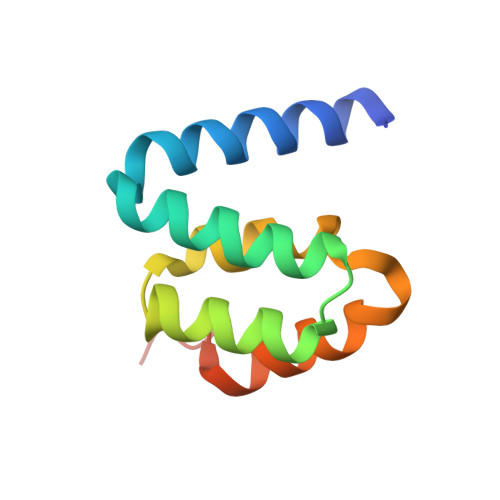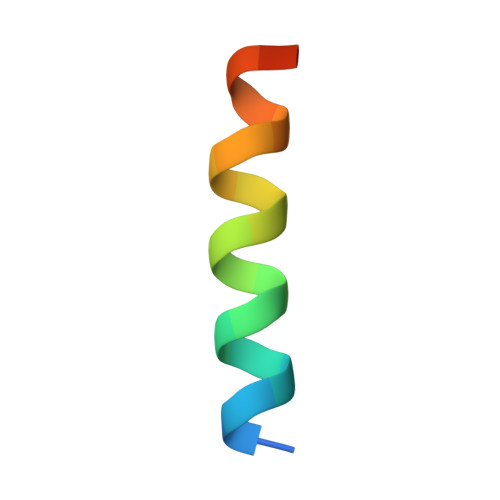Structural Insights into the Molecular Recognition between Cerebral Cavernous Malformation 2 and Mitogen-Activated Protein Kinase Kinase Kinase 3
Wang, X., Hou, Y., Deng, K., Zhang, Y., Wang, D.C., Ding, J.(2015) Structure 23: 1087-1096
- PubMed: 25982527
- DOI: https://doi.org/10.1016/j.str.2015.04.003
- Primary Citation of Related Structures:
4YKC, 4YKD, 4YL6 - PubMed Abstract:
Cerebral cavernous malformation 2 (CCM2) functions as an adaptor protein implicated in various biological processes. By interacting with the mitogen-activated protein kinase MEKK3, CCM2 either mediates the activation of MEKK3 signaling in response to osmotic stress or negatively regulates MEKK3 signaling, which is important for normal cardiovascular development. However, the molecular basis governing CCM2-MEKK3 interaction is largely unknown. Here we report the crystal structure of the CCM2 C-terminal part (CCM2ct) containing both the five-helix domain (CCM2cts) and the following C-terminal tail. The end of the C-terminal tail forms an isolated helix, which interacts intramolecularly with CCM2cts. By biochemical studies we identified the N-terminal amphiphilic helix of MEKK3 (MEKK3-nhelix) as the essential structural element for CCM2ct binding. We further determined the crystal structure of CCM2cts-MEKK3-nhelix complex, in which MEKK3-nhelix binds to the same site of CCM2cts for CCM2ct intramolecular interaction. These findings build a structural framework for understanding CCM2ct-MEKK3 molecular recognition.
Organizational Affiliation:
National Laboratory of Biomacromolecules, Institute of Biophysics, Chinese Academy of Sciences, Beijing 100101, People's Republic of China; Department of Clinical Oncology, Taihe Hospital, Hubei University of Medicine, Hubei 442000, People's Republic of China.















